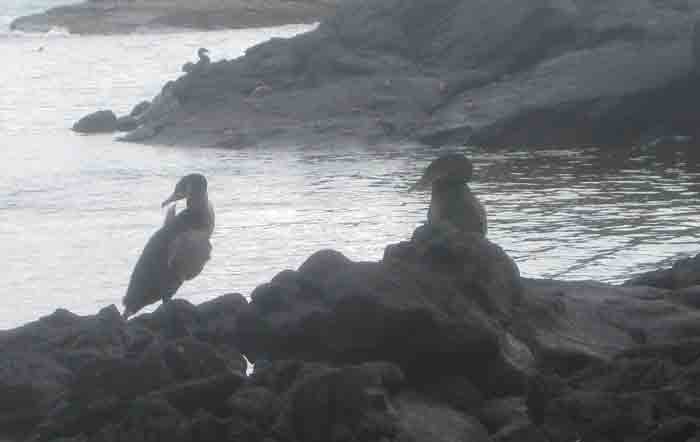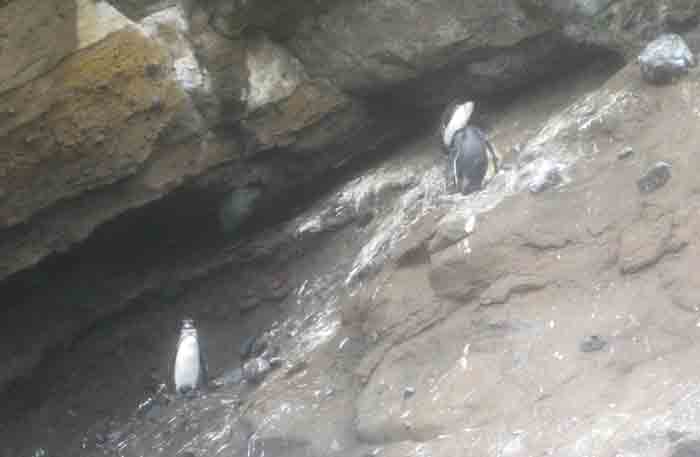Espinosa Point-Tagus Cove

ANGEL
David & Valerie Allen
Mon 22 Mar 2010 16:18
00:44.83 S 90:18.49 W Friday, March 19, 2010 Today we went ashore at Espinosa Point on Isla Fernandino (named for King Ferdinand). Again we marvelled at the Marine Iguanas and some of the other creatures on the island.  The American Oyster Catcher can ony dine at low tide, as it eats the barnacles exposed on the rocks at that time. With its long bright orange beak and rose coloured legs, it is a stunning bird. It also is monogamous and mates for life.  Dave found this sea turtle basking in the sun- a rare opportunity to photograph it clearly.  Flightless Cormorants are very odd birds. They are excellent divers and amazingly powerful swimmers. Accordingly, their wings have completely atrophied. And yet they still attempt to dry out those wings in between plunges! After our hike we had another great snorkel! In addition to many many turtles, we were joined again by a shark and a flightless cormorant. As we were swimming by the cliffs, a Galapagos Penguin was sitting at eye-level to us, but chose not to enter the water. These penguins must, at some time have come north on the Humboldt Current and were stranded here. They settled where the water was a bit cooler and seem to be thriving. It really is something to find penguins at the Equator! In the afternoon we went ashore on Isla Isabela (King Ferdinand's wife). We scaled the 100+ stairs up to Darwin Lake, where we attempted, rather unsuccessfully to photograph the stunning view. Once again, it was POURING! We also encountered a magnificent Tortoise in the woods and a huge Land Iguana. It would seem that we are doomed to be constantly wet in this normally arid land. Our guides told us the islands have not been this green and lush in thirty years. It looks like a major El Nino year! After the hike to the edge of the Darwin Volcano above the lake, we had a dinghy ride around the bay. There we finally saw several penguins and even approached copulating Sea Turtles. Apparently the iguanas and the turtles and tortoises have special adaptations for this as well. The male turltles have a concave lower shell to aid in mounting. The males of both species also have two penises. This is for the purpose of clasping the female's head with his upper limbs and then, using his tail, he can push aside her tail and then enter at the exposed side unhindered and no matter which side is exposed. (Aren't you glad you asked?)  Galapagos Penguins |